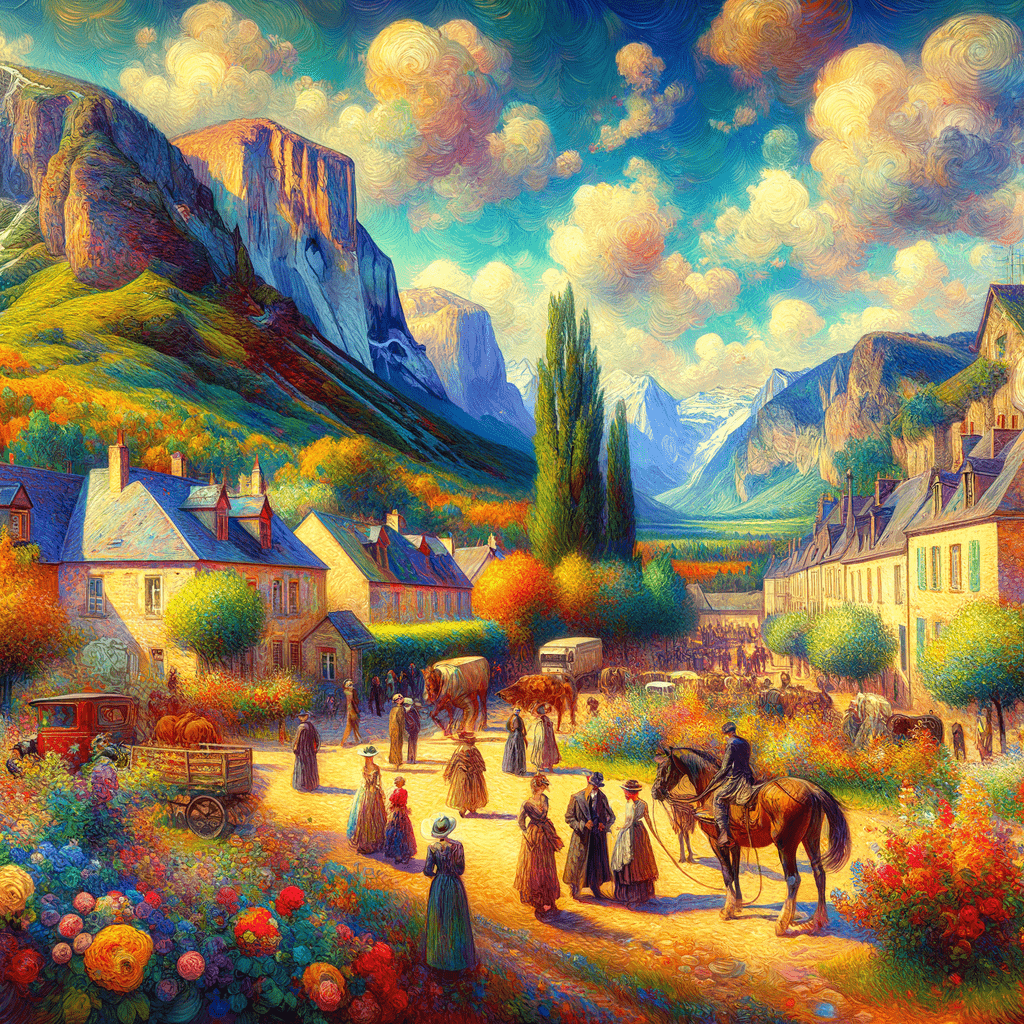A ranking of the most influential works of Impressionism that have left an indelible mark on art history
Impressionism was a revolutionary art movement that forever changed the way we see and interpret art. Born in France at the end of the 19th century, this movement challenged academic conventions and introduced new techniques and perspectives. In this article, we will explore the ten most influential impressionist works that have left an indelible mark on art history.
1. Impression, Sunrise by Claude Monet
Impression, Sunrise is perhaps the most iconic work of Impressionism. Painted by Claude Monet in 1872, this canvas gave the movement its name. The piece depicts the port of Le Havre at dawn, with quick brushstrokes and vibrant colors that capture the essence of the moment rather than precise details.
Monet used an innovative technique, applying color directly onto the canvas without mixing it first on the palette. This approach allowed him to create an effect of light and movement that was revolutionary for its time.
2. Le déjeuner sur l’herbe by Édouard Manet
Le déjeuner sur l’herbe, painted by Édouard Manet in 1863, is another fundamental work of Impressionism. Although Manet was not officially part of the Impressionist group, his work had a tremendous influence on the movement. This painting scandalized the public with its depiction of a nude woman in the company of two clothed men, breaking with the academic conventions of the time.
Manet employed a bold composition and vibrant colors to create a work that challenged the social and artistic norms of his time.
3. La Grenouillère by Pierre-Auguste Renoir
La Grenouillère is a painting by Pierre-Auguste Renoir created in 1869. It depicts a leisure scene along the Seine, with people enjoying a summer day. Renoir used quick brushstrokes and bright colors to capture the joyful and carefree atmosphere of the moment.
This piece is a perfect example of how the impressionists sought to capture the essence of modern life and everyday experiences.
4. Boulevard des Capucines by Claude Monet
Boulevard des Capucines, painted by Claude Monet in 1873, is another fundamental work of Impressionism. It depicts a view of the bustling Parisian boulevard, with a crowd of people moving along the street. Monet used quick brushstrokes and vibrant colors to create a sense of movement and vitality.
This work is a perfect example of how the Impressionists sought to capture the energy and dynamism of urban life.
5. Dance at the Moulin de la Galette by Pierre-Auguste Renoir
Bal au moulin de la Galette, painted by Pierre-Auguste Renoir in 1876, is one of the most celebrated works of Impressionism. It depicts a festive scene in a Parisian garden, with people dancing and enjoying themselves. Renoir used bright colors and soft brushstrokes to create an atmosphere of joy and lightheartedness.
This artwork is a perfect example of how the Impressionists aimed to capture the essence of social life and everyday experiences.
6. The Dance Class by Edgar Degas
The Dance Class, painted by Edgar Degas in 1874, is another fundamental work of Impressionism. It depicts a scene of a dance lesson, with ballerinas practicing under the guidance of a master. Degas employed an innovative composition and delicate colors to create a piece that captures the essence of movement and grace.
This work is a perfect example of how the Impressionists sought to capture the essence of everyday life and human experiences.
7. *La Gare Saint-Lazare* by Claude Monet
La Gare Saint-Lazare, painted by Claude Monet in 1877, is another fundamental work of Impressionism. It depicts a scene at the Saint-Lazare railway station in Paris, with trains arriving and departing. Monet used quick brushstrokes and vibrant colors to create a sense of movement and dynamism.
This piece is a perfect example of how the impressionists aimed to capture the energy and dynamism of modern life.
8. Luncheon of the Boating Party by Pierre-Auguste Renoir
Luncheon of the Boating Party, painted by Pierre-Auguste Renoir in 1881, is another fundamental work of Impressionism. It depicts a scene of an outdoor lunch along the Seine, with people enjoying food and company. Renoir used bright colors and soft brushstrokes to create an atmosphere of joy and carefreeness.
This work is a perfect example of how the Impressionists sought to capture the essence of social life and everyday experiences.
9. Rouen Cathedral by Claude Monet
The Rouen Cathedral is a series of paintings created by Claude Monet between 1892 and 1894. They depict the façade of the Rouen Cathedral under various lighting and atmospheric conditions. Monet used rapid brushstrokes and vibrant colors to capture the essence of changing light and time.
This series is a perfect example of how the Impressionists sought to capture the essence of change and transience.
10. The Japanese Bridge by Claude Monet
The Japanese Bridge, painted by Claude Monet in 1899, is another seminal work of Impressionism. It depicts a scene from Monet’s Japanese garden in Giverny, with a bridge spanning a pond of water lilies. Monet used bright colors and soft brushstrokes to create an atmosphere of serenity and beauty.
This piece is a perfect example of how the Impressionists sought to capture the essence of nature and beauty.
Conclusion
The Impressionist works revolutionized the art world by introducing new techniques and perspectives that challenged academic conventions. These ten works are perfect examples of how the Impressionists sought to capture the essence of modern life, daily experiences, and natural beauty. Impressionism has left an indelible mark on art history, influencing generations of artists and continuing to inspire audiences worldwide.
For further insights into Impressionism, visit the Musée d’Orsay website, one of the world’s most important museums dedicated to this artistic movement.




